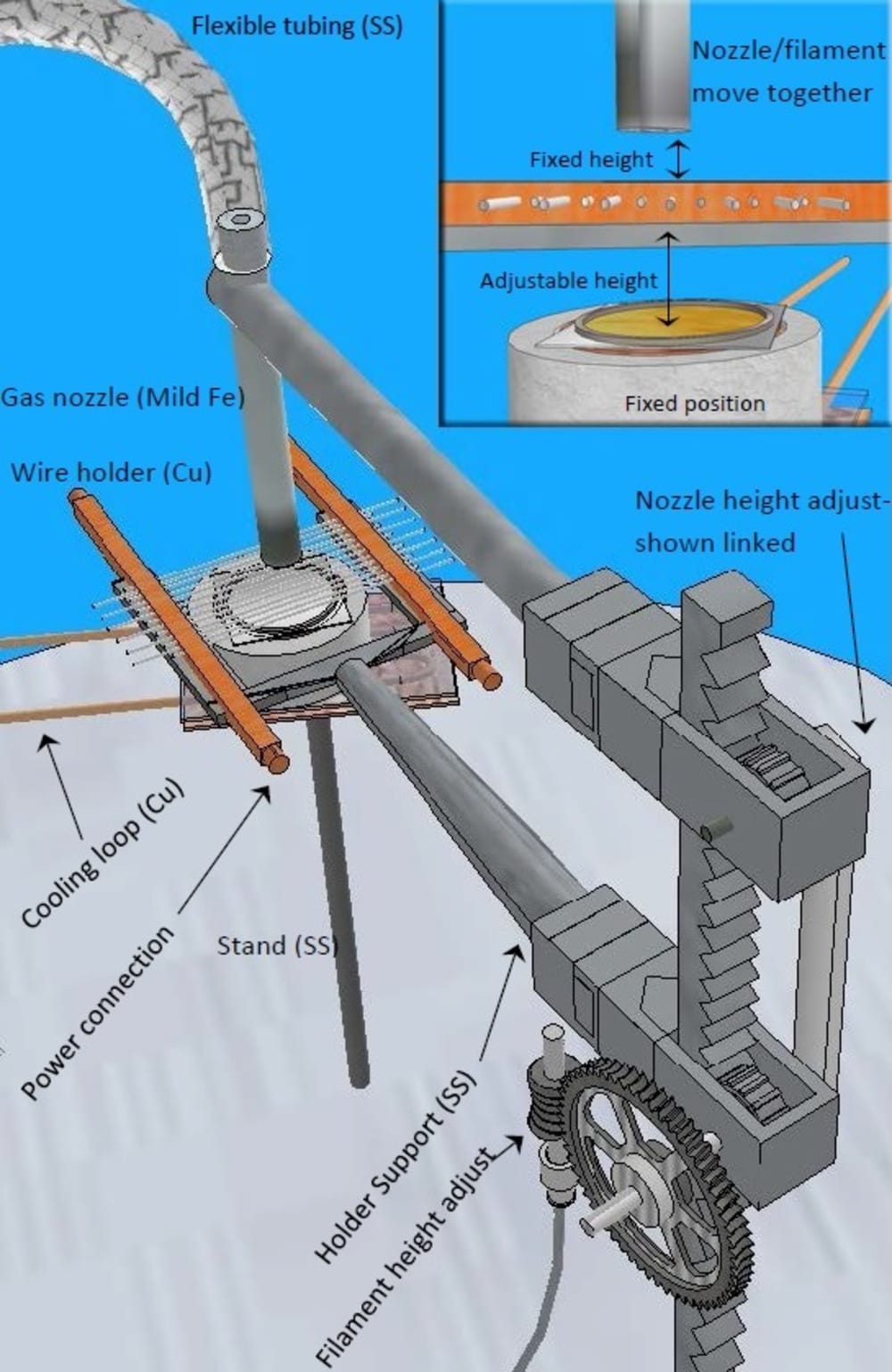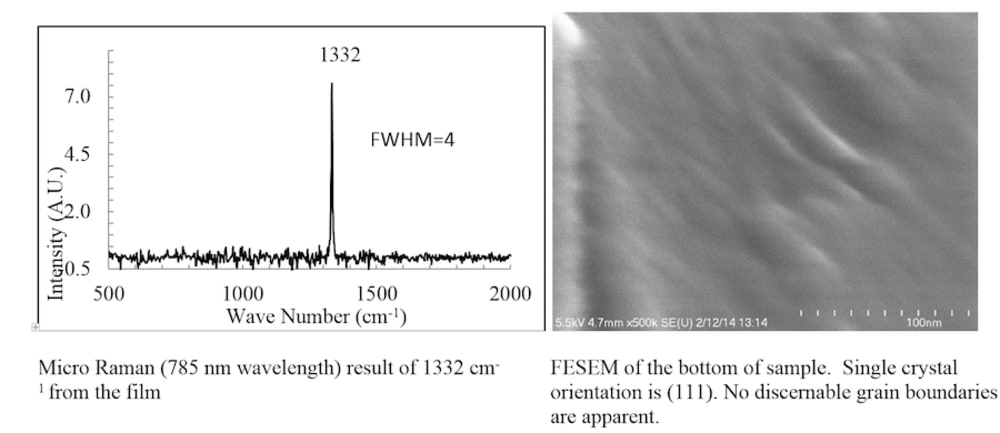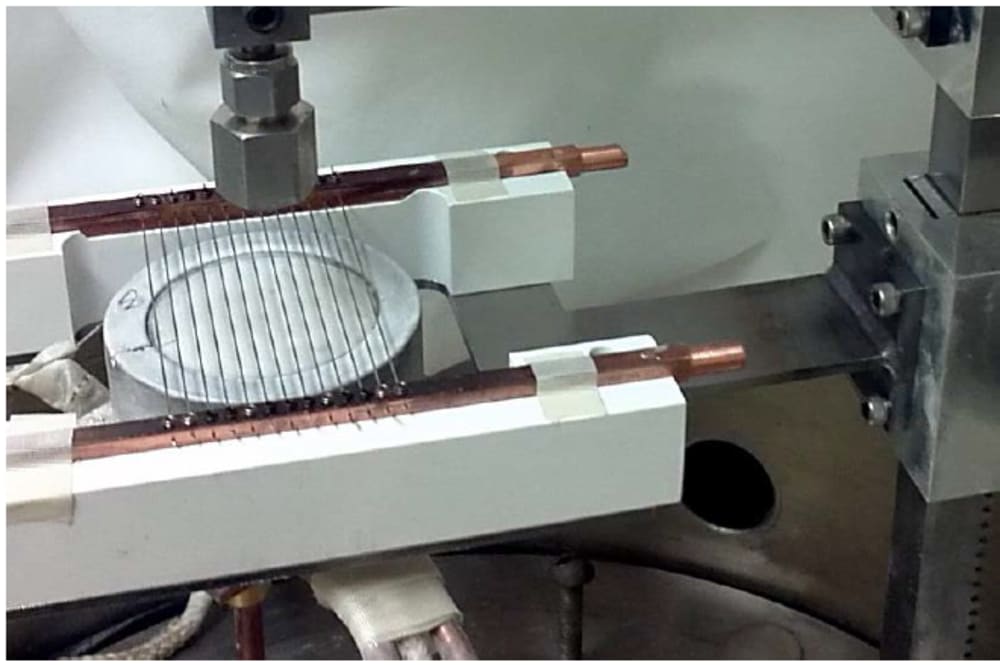Production advances have spurred further investigation into identifying properties of synthetic diamond films in high-purity form. These properties have provided evidence that films of exceptionally high quality can be used as a heat sink, as a sensor material in electro-chemistry, and as a neutron sensor. This discussion focuses on purposing a diamond film production method that may be used as a sensor material. To be utilized as a sensor material competitive with existing neutron detectors, these diamond films must be single crystals that are nearly completely free of lattice defects; possess high electron and hole mobility; demonstrate a high response rate to neutron interactions; and be comprised of sufficient cross section to interact with a large number of incident neutrons.
A new hot filament chemical vapor deposition (HFCVD) reactor design has shown the ability to produce large-area single crystal diamond wafers. Combining the new reactor design with a novel pretreatment method enables homoepitaxial growth of single crystals. Optimal growth parameters have been determined and used to create a mono-crystalline diamond wafer
As opposed to traditional HFCVD processes, the Hot Filament CVD reactor used to conduct this work implemented an original fluidized bed substrate pretreatment method, Lorentz forces generated during the run solely through the migration of electrons across the tungsten filaments, and unique gas inlet flow characteristics. These 3 techniques allow for diamond self-assembly during carbon condensation. Results include a 12 cm2 wafer 0.35 mm thick. Applications included neutron and electrochemical sensors, radiation hardened materials, heat sinks, infrared transparent films, scanning probe microscopy, and power electronics. Diamond is capable of storing energy through several methods including image current.
Neutron sensors- Ground or low-orbit space based 0.4-15 MeV neutron detection. Based on prior work at the University of Missouri, single-crystal diamond wafers were used to construct a functioning prototype that is currently in use.
Advantages over other products: Current commercial neutron sensors have low efficiencies (<15% for DoD use, <50% (in design review, current neutron efficiencies are much lower) for DHS use)). Theoretical efficiency is 100%, bench tests on diamond demonstrate above 85% (no diamond crystal is perfect). Lower efficiency means greater surface area to compensate. Higher efficiencies require smaller surface area for same result.
Electrochemical sensor- This is diamond coating application. Boron doped diamond provides high corrosion resistance while providing a good contact for ionic transfer.
Advantages over other products: Good electrochemical sensors must allow for good ion exchange without wearing out. Most sensors of this type interact with the electrochemical medium to such an extent that their efficacy is degraded over time. Diamond does not suffer from electrochemical degradation (certain oxygen ion rich environments can etch diamond but improve its electrochemical properties).
Like this entry?
-
About the Entrant
- Name:Paul Mason
- Type of entry:individual
- Software used for this entry:Sketchup/MCNP
- Patent status:pending








